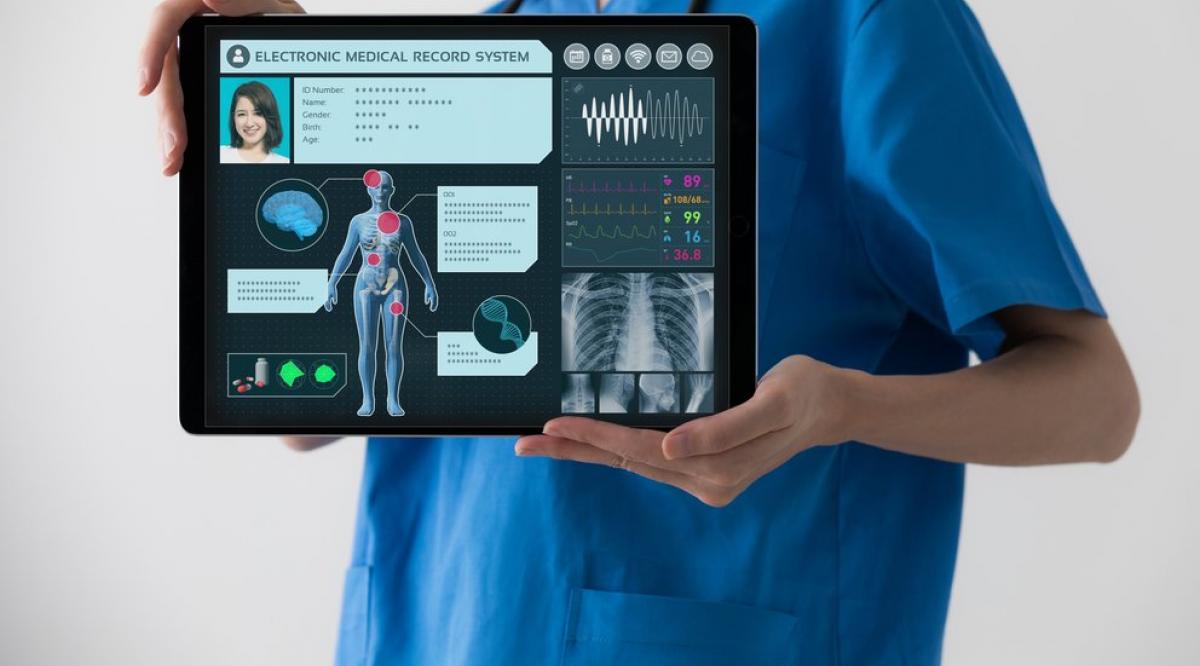Over recent years, the overwhelming trend in healthcare has been the increased use and adoption of Electronic Health Records (EHR). This can be attributed to a significant rise from 2008, where only 42% office-based physicians were using them, up by 2017, it had reached 86%. Nowadays, most doctors have access whether they want too or not.
The use of EHRs can improve patient care in many ways, from improving relationships between clinicians and their patients to storing all data digitally. Quality-certified units have the potential for even more safety improvements when they’re used correctly.
Here’s a closer look at some of the ways EHRs can improve patient safety
#1 – Prevent Possible Side Effects
EHR systems provide a number of advantages over traditional paper charts, including the ability to electronically store and access patient information. This means that when you’re prescribing medication or ordering lab tests, it is easier than ever before if your patients have an adverse event from one drug interacting with other medicines they are taking in addition their food allergies being monitored by EHR software which will help prevent any adverse side effects related caused by treatments because now we can see everything about them.
With inpatient EHRs, medical professionals can access information about their patients anywhere. This means they can make the best decisions for caring for and treating people with problems regardless of where those individuals live or work – all from one system.
#2 – Improved Automation
The automation of EHRs improves patient safety in several ways. If patients fail to pick up essential prescriptions, physicians can be notified so they’re not left without care or with an unnecessary drug that could cause harm if missed doses aren’t picked up timely enough because it would lead to complications down the line like nerve damage from high blood sugar levels untreated due lackadaisical attitudes towards taking one’s own medication regimen properly.
EHRs are a modern miracle for healthcare providers, automating processes to reduce human error and harm done. For example: If someone goes into emergency care-seeking treatment they can notify their primary doctor so that follow-up appointments may still happen on time without any hassle or delay.
#3 – Make Use of Patient-Reported Data
EHRs are improving patient care by using patient data when available. Wearables and IoT healthcare devices continue to gather more passive tracking of wellness that will likely be useable in the future. Still, providers can rely on report-card style feedback right now too. The information gathered via these reports could help close gaps about what people need or want out their medical experience while also allowing them to focus attention where its needed most – like personalized treatment plans for you specifically (based off history).
#4 – Help Patients Prevent Disease
The EHR can help identify patients who haven’t received essential screening examinations, such as kidney disease and colon cancer. Taking preventative measures may reveal the earliest signs of these serious diseases so we should all do our part in order to stay healthy.
The EHR can help identify patients who haven’t received essential screening examinations, such as kidney disease and colon cancer. Taking preventative measures may reveal the earliest signs of these serious diseases so we should all do our part in order to stay healthy.
#5 – Improve Patient Compliance and Engagement
The more patients understand their medical treatment; the better outcomes they will have. EHRs and technology like patient portals help tighten relationships between doctors and their patients by giving both parties access to records so that any questions or concerns can quickly be addressed in an open manner without having adverse consequences for either party’s health status as well-rounded care process goes along smoothly.
#6 – Better Patient Care Outcomes
The ability to access information on patients like allergies, medications and chronic illness via an EHR helps calculate patient healthcare trends. This central database also makes it easy for caregivers in different settings. Whether they’re visiting your physician’s office or another type of treatment center-to have all relevant data at their fingertips without having any needlessly tedious paperwork scattered around town.
#7 – Transform Clinical Processes
Hospitals and providers can reduce the stress on patients by using an EHR. Patients are able to monitor their virtual encounters with other doctors, get insurance information without being seen in person by someone else or waiting around for hours at a time while still handling all aspects of intake that need attention outside just between themselves; this also allows them more time spent seeing respective specialists when needed.
#8 – Boosts Quality of Clinical Research
We can improve clinical research quality with recent technological innovations and the power of EHRs. Medical teams will be able to keep a closer eye on patients’ treatment plans as well as disease progression in order for them make better decisions that are easier shared with other facilities or peers who may also need this information too.
#9 – Empowered Patients
The use of an EHR also improves patient safety by empowering patients. Two important aspects include engagement and empowerment, where providers cannot always keep a close eye on their charges nor will they be able to execute any plans given without input from the individual in question first-hand which leads us back into our original point about additional opportunities for errors when not utilizing this technology at all times during treatment sessions or even after visits have been completed – but before we go further I want you take note that there are many different types/brands available so make sure yours has glitches fixed beforehand.
Key Takeaway
The healthcare industry is rapidly changing, and patients are more empowered than ever before. With patient portals that sync with EHRs in order to provide access for communication between care team members or refill prescriptions— Patients can schedule appointments while checking on test results all from one central location.









































